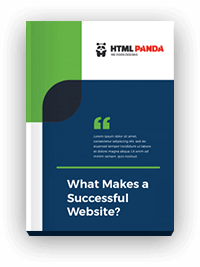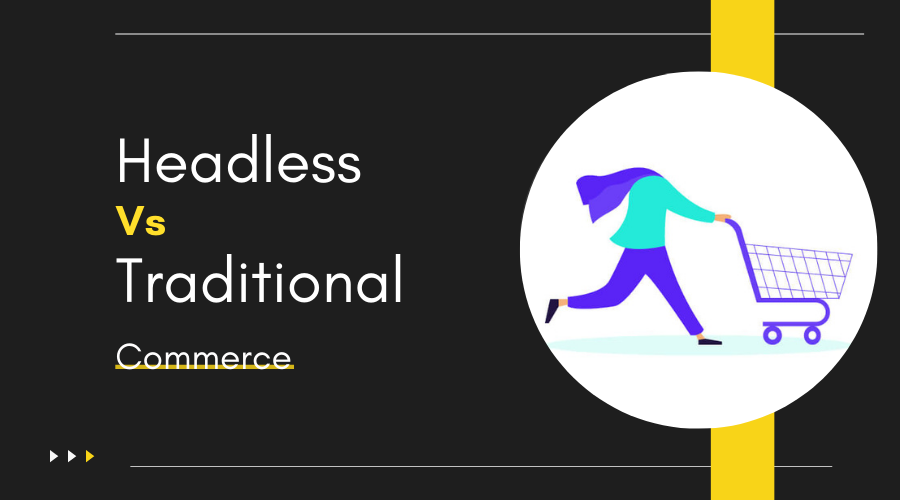E-commerce is constantly evolving, and headless commerce is one of its most significant advancements. This blog discusses the traditional vs headless commerce approach and which one to choose for your e-commerce business.
Since the dawn of e-commerce, consumer comfort with online purchases has grown exponentially, first with traditional websites and now via apps and other channels. As a result, businesses are gravitating towards headless commerce in order to reinvent their revenue streams and improve their customer experience. However, going headless isn’t for everyone.
The user experience in e-commerce is crucial. Baymard Institute’s analysis of 41 different studies found an online shopping cart abandonment rate of 70%, the primary reason for which is a site’s UX. Headless commerce boosts your site’s UX in more ways than one, and that’s why many businesses are seeking a reliable headless commerce development company.
What Is Traditional Commerce?
Traditional commerce involves any business exchange that takes place face to face located in physical store space. Traditional commerce enables customers to come in personally to buy products and services. Traditional e-commerce has a front-end that is strongly joined with the back-end, allowing for features representing traditional platforms like Shopify, Magento, and WordPress.
What Is Headless Commerce?
Headless commerce is a separation of a website’s front-end from its back-end, enabling both to operate independently. It’s a decoupling of the presentation layer of a website from the e-commerce functionality. Headless commerce stores offer more flexibility and manage and deliver content via API calls without a connected front-end layer that helps you create a unique, highly-personalized, and user-friendly experience for your visitors.
How Does Headless Commerce Work?
By decoupling the front-end customer experience from the back-end technology, headless commerce positions brands to push content to the front-end via CMS instead of their commerce platform. Along with the flexibility, decoupling benefits include speed to market, increased personalization, and better control.
Headless commerce systems work by passing requests between the presentation and application layers through web services or application programming interface (API) calls. With a headless commerce architecture, the API can be used to pull information anywhere, including wearables, cars, IoT devices (smart appliances, TVs, Alexa, and others), apps running on any platform, social networks, and more.
Why Is Headless Considered Groundbreaking?
What distinguishes headless commerce from traditional commerce is that it decouples the front-end and removes any constraining dependencies with the back-end, thus opening up a free pathway to innovating the front-end without any limitations and restrictions.
The separate display logic allows the headless application to move quickly, responsively, and easily. This flexible approach is ideal for brands that aspire to evolve and grow in the future or those that require a very specific front end.
What Are the Key Benefits of Headless Commerce?
There’s no better example of leveraging headless commerce than Amazon. Amazon is at the forefront of helping retailers avoid experiencing the frustration associated with a traditional commerce platform. Here are some reasons to go with headless commerce.
- Go Omnichannel – Headless commerce allows you to push your content anywhere and everywhere. This opens up opportunities for your e-commerce business to leverage any channel and maximize revenue.
- Competitive Edge – Headless commerce allows you to deploy rapid updates without impacting the back-end system. This lets you deliver what your customers want without delay.
- Active Marketing – Headless commerce enables your marketing team to set up a new site in days instead of months, and roll out those sites across brands, divisions, and portfolios.
- Consistent Customer Experience – Headless commerce allows you to make the customer experience more personal and consistent by understanding your clients’ ever-changing needs across all channels.
- Seamless Integrations – An API call in headless commerce makes it easier to integrate and communicate with other platforms, expanding your opportunities for customer outreach.
Headless vs Traditional E-Commerce: Key Differences
We’ve talked about traditional e-commerce and headless commerce, yet there are several differences between the two and require a head-to-head comparison for a better understanding.
Front-end Development
Traditional e-commerce comes with design and engineering constraints, but it is easier to create and faster to launch. Headless commerce offers greater flexibility for front-end development but usually takes more time to implement.
Traditional E-Commerce:
Front-end developers complain of having too many restrictions in terms of design and overall process with traditional e-commerce. It requires a great amount of time to edit the database, code, and front-end platform. Developers are also constrained by what can be edited/updated without voiding a warranty or preventing future upgrades.
Headless Commerce:
On the other hand, headless commerce enables front-end developers to create a user experience from scratch that fits business needs well. With headless commerce, front-end developers need not worry about changes in the back-end database, as API calls ease those tasks. In short, front-end developers are free from hurdles faced during a traditional e-commerce front-end development.
Flexibility and Personalization
Traditional E-Commerce:
Traditional solutions’ front-end is strongly coupled with back-end coding and infrastructure, leaving no room for flexibility. Traditional e-commerce platforms are well-equipped with a one-size-fits-all customer and administrative experience, forgoing any personalization. Developers need to edit multiple layers of coding between front-end and back-end databases.
Headless Commerce:
With no front-end, developers with headless commerce can create their own experience from scratch effortlessly. With headless commerce, you can control your e-commerce platform’s look and feel and user experience for both users and admins. Since headless commerce is decoupled with front-end and back-end, it opens up endless opportunities for flexibility. You can easily change anything with headless commerce.
Technical Knowledge
As we talked about front-end development, flexibility, and personalization, you must’ve figured out by now which one between traditional vs headless commerce requires how much technical knowledge.
Traditional E-Commerce:
Traditional e-commerce requires less technical knowledge than headless commerce and is advisable to those who don’t have the budget or expertise for advanced development.
Headless Commerce:
For those who are well-versed with technical know-how; however, headless commerce is the way to go for many larger and growing enterprises. It offers endless customization options and enables you to create an enhanced experience for various types of customers.
Should You Go Headless?
By reviewing the key differences between traditional and headless e-commerce, you’ve likely decided by now which one you should go with. There’s no clear-cut answer to e-commerce supremacy, as both have pros and cons, but by considering what’s outlined above and your own business requirements, you should be equipped to make the right decision.











